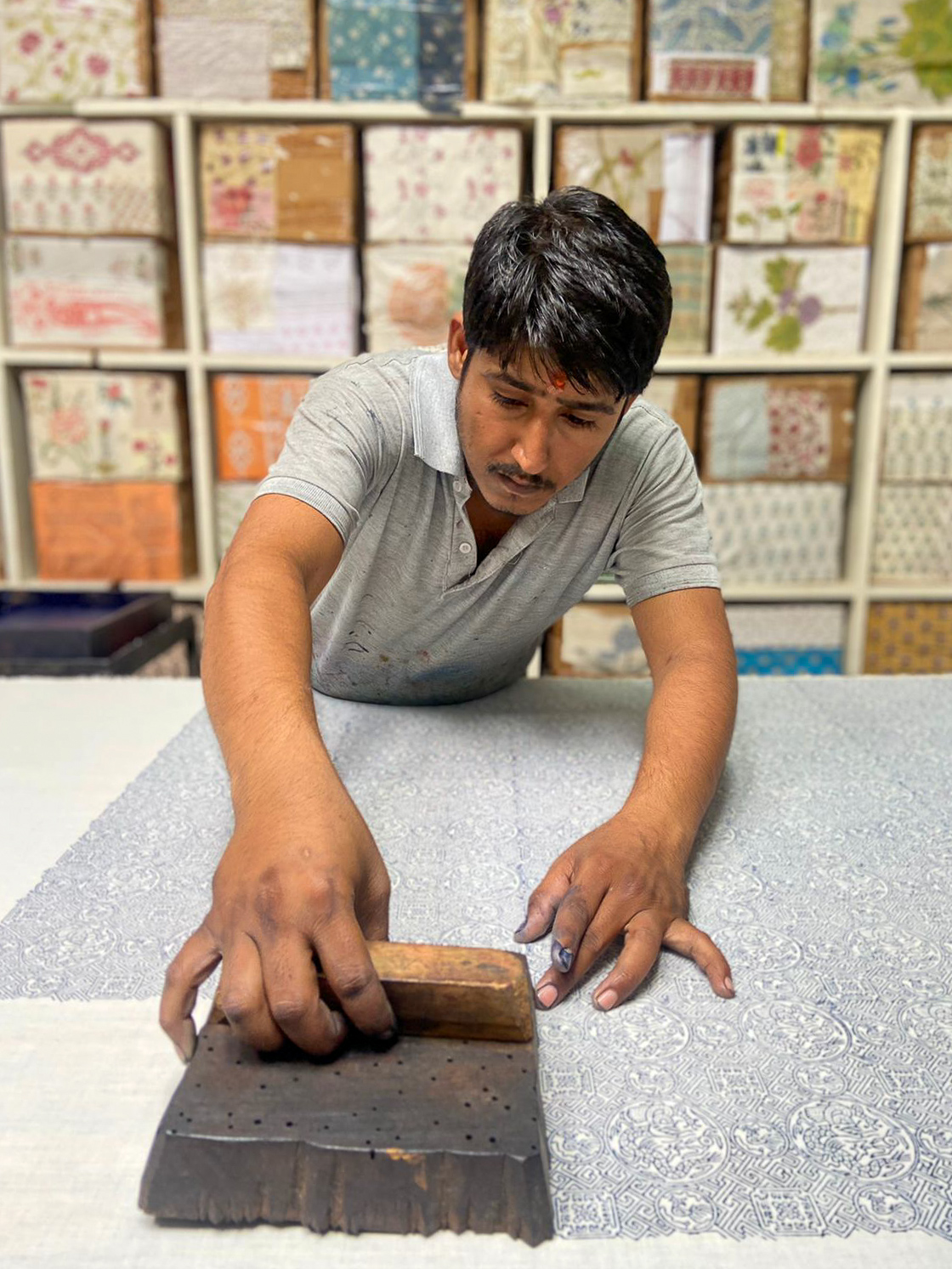

Khasto's view on fair trade
Khasto works with local producers and artisans who work in small teams of five to twenty-five people, who have usually been associated with the company for a long time. Often several members of the same family work together and transfer knowledge and skills to each other. To ensure that they work in a positive and safe environment, we have signed agreements with our suppliers. This means that everyone involved in the Khasto production process has a formal employment contract, receives an above-average wage and is paid in the event of overtime and illness. We visit the workshops several times a year. In this way, we hope that positive effects will arise from the growth of the Khasto brand.
In addition to our regular cotton cashmere collection and the changing summer collection, we try every year, while browsing the markets of Rajasthan, to find unique pieces that fit our brand. For us, this is one way we explore the rich history and traditions of India. By offering a rich variety of products, we hope to tell our story about India.
Sustainable production
Khasto is a slow fashion brand. We value traditional techniques and the use of biological materials, where attention is more important than speed. The production process of our collections usually takes several months. For example, the fabric of the annually changing summer collection is printed entirely by hand (block print). The choice for block print not only contributes to the preservation of traditional techniques, but we also achieve our goal of using as little water as possible in the printing process. This process is time-consuming and expensive, but a logical choice for both the environment and the eye.
Because cotton is our main material, we use sustainable resources. Our goal is to realize a production process that is as sustainable as possible. For example, in 2020 we made a transition to GOTS- and OCS-certified organic cotton.
For our collection we increasingly use natural dyes, such as turmeric and indigo. The other pigments we use are AZO-free and do not contain heavy metals.
Our goals for 2025:
- By 2023 and 2024, we have achieved the goals of fully using 100% organically grown cotton (free from harmful chemicals, modified seeds and excessive use of water). By 2025, we want to scale up the block print collection by 150%, to further reduce the use of water and to give the traditional craft of block print an even more central place in the collections. We also want to replace recycled plastic packaging with a paper alternative and we will improve other parts of the product presentation with residual material instead of new materials from the printer. As in previous years, we will spend two months in India with our suppliers in 2025 to gain a complete picture of - among other things - the working conditions of the people we purchase from. These are the block printers and the more than 50 people who work as sewers, inspectors, packers and administrative assistants.
